"Portugal was an absolute gem! From the vibrant streets of Lisbon to the picturesque beauty of Porto, every moment was magical. I loved the historic charm of Lisbon, especially the Belem Tower and the Jerónimos Monastery. The food was a highlight – bacalhau (salted cod) and the famous pastéis de nata were delicious. Porto's port wine tasting experience was unforgettable, and I felt safe and welcomed everywhere I went. The public transport system is also very convenient for tourists. I can't wait to visit again!"
- Home
- About Us
- International
- Africa
- America
- Asia
- Australia & New Zealand
- Europe
- Middle East
AfricaEgypt
Mauritius
Zimbabve
AmericaAsiaAustralia & New ZealandEuropeCentral and Eastern Europe
Highlights
Mediterranean Europe
Middle East - Domestic
- North India
- South India
- East and North East
- Rajasthan, West and Central
North IndiaDelhi
Himachal Pradesh
Uttarakhand
Amritsar
Chandigarh
Punjab & Haryana
Uttar Pradesh
South IndiaAndaman and Nicobar Islands
Kerela
Andhra Pradesh
Tamil Nadu
East and North EastAssam
Nagaland
Tripura
Meghalaya
Rajasthan, West and Central - Temple Darshan
- Group Booking
- Blogs
- Contact Us
Sights
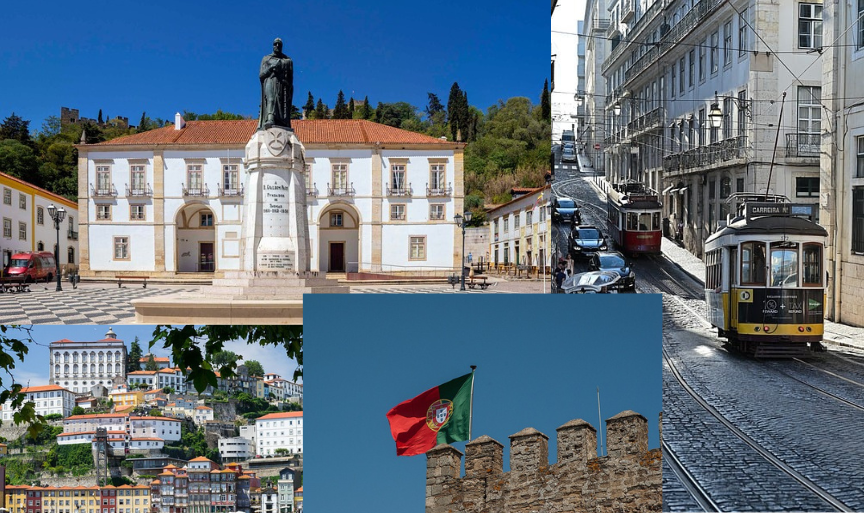
Explore Portugal
Portugal is a stunning European destination known for its rich history, scenic landscapes, and vibrant culture. From the historic streets of Lisbon with its iconic trams and Belém Tower to the charming town of Porto, famous for its port wine, Portugal offers a perfect blend of old-world charm and modern allure. The Algarve region boasts beautiful beaches, while the Douro Valley offers picturesque vineyards. Visitors can enjoy delicious seafood, the soulful sounds of Fado music, and world-renowned architecture, including the stunning Pena Palace in Sintra. Portugal is a must-visit for those seeking a mix of culture, history, and natural beauty.
Places You'll See
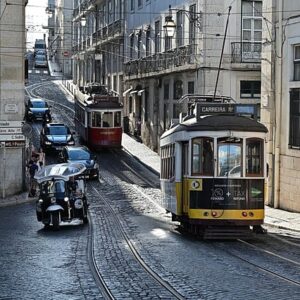
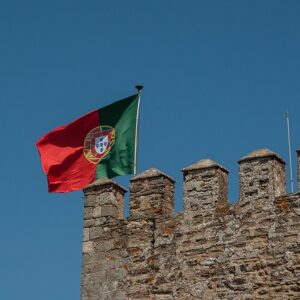
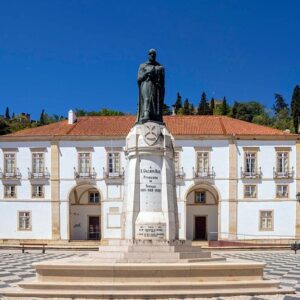
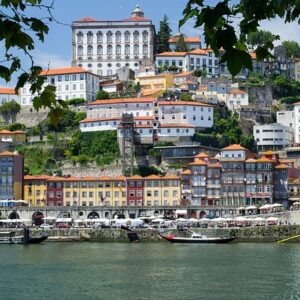
Tour Highlights
- Well planned Tour itinerary.
- Kitchen as per our own convenience.
- Best hotels through out the tour.
- Unique tour of Scenic Beauty
- Stay in destinations that have proper facilities like hospitals, Market.
- Our groups are scheduled back to back, which is very helpful.
Tour Itinerary
Portugal
Days Plan
- Arrival: Arrive in Lisbon and check into your hotel.
- Morning: Start your day with a visit to Belém Tower, Jerónimos Monastery, and the Discoveries Monument, all significant landmarks reflecting Portugal's Age of Exploration.
- Afternoon: Explore Alfama, Lisbon’s oldest district, known for its narrow, winding streets and picturesque views. Visit the São Jorge Castle for panoramic views of the city.
- Evening: Enjoy a traditional Fado performance over dinner in one of Lisbon's many Fado restaurants, particularly in the Alfama district.
- Morning: Take the famous Tram 28 to explore the city’s highlights, including Baixa, Chiado, and Bairro Alto. Stop by the Lisbon Cathedral and Santa Justa Lift.
- Afternoon: Visit the MAAT (Museum of Art, Architecture, and Technology) and explore LX Factory, a trendy area with galleries, cafes, and shops.
- Evening: Head to Príncipe Real for a relaxed evening, filled with cafes and panoramic views.
- Morning: Take a day trip to Sintra (about 40 minutes from Lisbon by train). Visit the fairy-tale Pena Palace, a colorful castle perched on a hilltop with stunning views.
- Afternoon: Explore Quinta da Regaleira, a mysterious estate with gardens, grottoes, and an intriguing initiation well. Then, head to the charming town of Cascais, a coastal resort known for its beautiful beaches and vibrant atmosphere.
- Evening: Return to Lisbon and enjoy dinner at a local restaurant, trying dishes like bacalhau (salted cod) or pastéis de nata (custard tarts).
- Morning: Take a morning train or flight to Porto (about 3 hours by train or 1 hour by flight).
- Afternoon: Explore Porto's historic center, a UNESCO World Heritage site. Visit the Ribeira District, São Bento Railway Station (famous for its blue-tiled murals), and the impressive Porto Cathedral.
- Evening: Enjoy a port wine tasting at one of the famous wine cellars in Vila Nova de Gaia, located just across the river from Porto, offering beautiful views of the city.
- Morning: Take a scenic day trip to the Douro Valley, known for its terraced vineyards and stunning landscapes. You can visit a winery for a tour and wine tasting.
- Afternoon: Take a boat tour along the Douro River to admire the valley’s beauty from the water, or continue exploring the picturesque villages and vineyards of the region.
- Evening: Return to Porto for a relaxing evening. Try a traditional francesinha, a local sandwich dish, for dinner.
Notes:
• 2 passport size photos
• Adult – Original + photocopy of any of the ID proof i.e. Aadhar Card / Driving Licence / Voters ID / Passport
• Child – Original + photocopy of any of the ID proof i.e. Aadhar Card / School ID / Passport
• Infant – Aadhar Card / Birth certificate
• NRI / Foreign nationals – Mandatory Passport + Valid Indian visa / OCI card / PIO card
• Above mentioned ID proof is mandatory at the time of booking and carry the same ID proof on tour as well
Portugal
Tour Details
Hear from Our
Happy Travelers

"My trip to Portugal was incredible, and it was one of the most beautiful countries I’ve visited. The Algarve coastline is simply stunning, with crystal-clear waters and dramatic cliffs. I also loved the historic town of Sintra, especially the colorful Pena Palace, which felt like stepping into a fairy tale. Porto’s riverside views and port wine tours were perfect for a relaxing day. The Portuguese people were so welcoming, and the ease of traveling around made the experience even better. It’s a must-visit destination for anyone!"

"I went to Portugal on a family vacation, and it was a wonderful experience. We spent time in Lisbon, Porto, and the beautiful Douro Valley. The trams in Lisbon were so charming, and I’ll never forget the view from São Jorge Castle. In Porto, we explored the vibrant Ribeira district and had a fantastic time at the wine cellars. The Douro Valley's terraced vineyards were a dream come true for wine lovers. Portugal's combination of history, culture, and natural beauty made it the perfect vacation spot for our family."

The best time to visit Portugal depends on your preferences, but generally, spring (April to June) and fall (September to October) are considered the most ideal seasons. Here’s a breakdown of the different seasons:
1. Spring (April to June)
- Weather: Spring offers mild to warm temperatures, ranging from 15°C to 25°C (59°F to 77°F). It’s perfect for sightseeing and outdoor activities, with fewer crowds than in summer.
- Why Visit: The landscapes are lush, flowers are in bloom, and it’s the best time to explore Portugal’s cities and countryside without the summer heat.
- Festivals: You can experience local festivals like Festa de São João in Porto in June, where the city is filled with music, food, and fun.
2. Summer (July to August)
- Weather: Summer in Portugal can be hot, especially in inland areas and southern regions like the Algarve, where temperatures can reach 30°C to 40°C (86°F to 104°F). Coastal cities like Lisbon, Porto, and Cascais stay warmer but are more comfortable with sea breezes.
- Why Visit: If you’re a beach lover, summer is the perfect time to enjoy Portugal’s stunning coastline, particularly in the Algarve. This is also when festivals and outdoor activities are in full swing, and the nightlife is vibrant.
- What to Consider: Summer is the peak tourist season, so popular tourist spots will be crowded and prices for accommodation and flights will be higher. If you want a quieter experience, consider visiting the islands of the Azores or Madeira.
3. Fall (September to October)
- Weather: Fall offers mild temperatures similar to spring, ranging from 18°C to 25°C (64°F to 77°F), with less rain than in the winter. The weather is ideal for sightseeing, hiking, and exploring vineyards.
- Why Visit: Fewer tourists visit in the fall, so you can enjoy Portugal’s attractions at a more relaxed pace. The harvest season in the Douro Valley also makes it a great time for wine enthusiasts.
- Festivals: Oktoberfest in Lisbon and the Festas de Nossa Senhora da Agonia in Viana do Castelo are popular events during this time.
4. Winter (November to March)
- Weather: Winter temperatures in Portugal are mild compared to northern Europe, with coastal cities averaging 10°C to 15°C (50°F to 59°F). However, it can get colder inland, particularly in the mountains, where it may snow.
- Why Visit: This is the off-season for tourism, so you can visit major attractions without the crowds. If you enjoy winter sports, you can also visit the mountains, such as those in Serra da Estrela. It’s also a great time to explore Portugal’s cities and cultural heritage at a slower pace.
- Festivals: Christmas markets and New Year’s celebrations are popular in Lisbon, Porto, and other cities, with festive events and holiday lights.
Best Overall Time:
- Spring (April to June) and Fall (September to October) are the best times for most travelers, offering comfortable temperatures, fewer crowds, and the opportunity to explore both cities and nature.
- For Beach Lovers: Summer is ideal, especially for the Algarve region.
Visiting Portugal is an exciting experience that’s easy to plan. Here’s a step-by-step guide on how to visit Portugal:
1. Check Passport and Visa Requirements
- For EU/EEA Nationals: If you’re from a country in the EU or European Economic Area (EEA), you don’t need a visa to visit Portugal. A valid passport or ID card is sufficient.
- For Non-EU Nationals:
- Short Stays (up to 90 days): If you’re from a visa-exempt country, you can visit Portugal without a visa for up to 90 days. Portugal is part of the Schengen Area, so check if your country is part of the Schengen visa waiver program.
- Long Stays: If you plan to stay longer than 90 days for work, study, or other purposes, you will need to apply for the appropriate visa at the nearest Portuguese consulate.
- Schengen Visa: If required, you can apply for a Schengen visa for short stays at the Portuguese embassy or consulate in your home country.
2. Book Your Flight to Portugal
- Main Airports:
- Lisbon Airport (Humberto Delgado Airport): The largest and busiest airport, with numerous international flights.
- Porto Airport (Francisco Sá Carneiro Airport): The second-largest international gateway in Portugal, ideal if you’re visiting Porto.
- Funchal Airport: Located on Madeira Island, if you’re visiting the island.
- Ponta Delgada Airport: Located in the Azores, another popular island destination.
- Flight Options: There are many international airlines flying to Portugal. You can also choose low-cost carriers like Ryanair, EasyJet, and Vueling for cheaper flights.
3. Plan Your Transportation Within Portugal
- Trains: Portugal has a great train network. The Comboios de Portugal (CP) operates high-speed trains (Alfa Pendular) between Lisbon, Porto, and other major cities. You can also take scenic trains, such as the Douro Line to the Douro Valley.
- Domestic Flights: If you’re traveling to the islands (Azores or Madeira), you may need to fly from the mainland. Flights between Lisbon, Porto, and the islands are frequent and affordable.
- Buses: For regional and rural travel, buses are a good option. Companies like Rede Expressos and EVA Transportes cover major routes.
- Public Transportation: Major cities like Lisbon and Porto have excellent metro, tram, and bus services. You can buy day passes for unlimited travel within the city.
- Renting a Car: If you want to explore the countryside or coastal regions like the Algarve, renting a car is a good idea. Portugal’s roads are well-maintained and easy to drive on.
4. Where to Stay
- Hotels: Portugal has a wide range of accommodation options, from luxury hotels to budget-friendly options. Popular chains like Pestana and Tivoli offer high-end stays.
- Airbnb: Renting a local apartment or house can be a good option, especially for longer stays or families.
- Hostels: Portugal is a great destination for backpackers. Cities like Lisbon and Porto have vibrant hostel scenes.
- Paradores: These are government-run hotels located in historical buildings like castles or palaces, offering a unique stay experience.
5. Health and Safety
- Travel Insurance: It’s always a good idea to get travel insurance that covers health emergencies, lost luggage, and trip cancellations.
- Healthcare: Portugal has excellent healthcare facilities. If you’re an EU citizen, you can use your European Health Insurance Card (EHIC). Non-EU nationals should check with their travel insurance for coverage.
6. Currency and Payments
- Currency: Portugal uses the Euro (€). ATMs are widely available, and credit cards are accepted almost everywhere.
- Tipping: Tipping is appreciated but not mandatory. In restaurants, a 5-10% tip is common if the service is good.
7. Learn Basic Portuguese Phrases
Though many people in Portugal speak English, it’s always helpful to know a few basic phrases in Portuguese:
- Hello: Olá
- Please: Por favor
- Thank you: Obrigado/a (male/female)
- Goodbye: Adeus
- How much is this?: Quanto custa isso?
8. Cultural Etiquette
- Dining Hours: In Portugal, lunch is typically served between 12:30 PM and 3:00 PM, while dinner is around 8:00 PM to 10:00 PM.
- Social Customs: Portuguese people are friendly and welcoming. It’s customary to greet people with a handshake or cheek kiss, depending on the region.
- Dress Code: Casual wear is fine for most places. For more formal dining or certain venues, it’s good to dress smartly.
9. Top Things to Do in Portugal
- Lisbon: Explore the historic districts like Alfama and Baixa, visit the Jerónimos Monastery and Belem Tower, and take a tram ride through the city’s hills.
- Porto: Visit the Ribeira District, sample Porto’s famous port wine, and take a boat ride along the Douro River.
- Algarve: Relax on the stunning beaches, visit the caves of Lagos, and enjoy the Mediterranean climate.
- Sintra: Discover fairy-tale castles like Pena Palace and explore the beautiful Quinta da Regaleira gardens.
- Douro Valley: Enjoy wine tasting and a scenic boat tour along the Douro River.
10. Explore and Enjoy!
Once you’re in Portugal, immerse yourself in the culture, enjoy the delicious cuisine (especially seafood like bacalhau and pastéis de nata), and explore the country’s rich history, stunning landscapes, and charming cities.

Book Now and embark on your next unforgettable adventure
With our team of seasoned travel experts and local guides, we ensure that each trip is crafted to perfection, tailored to your preferences, and filled with unforgettable memories.



